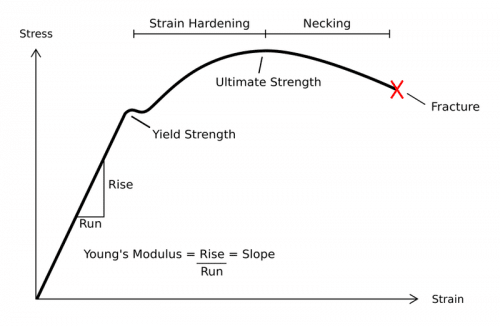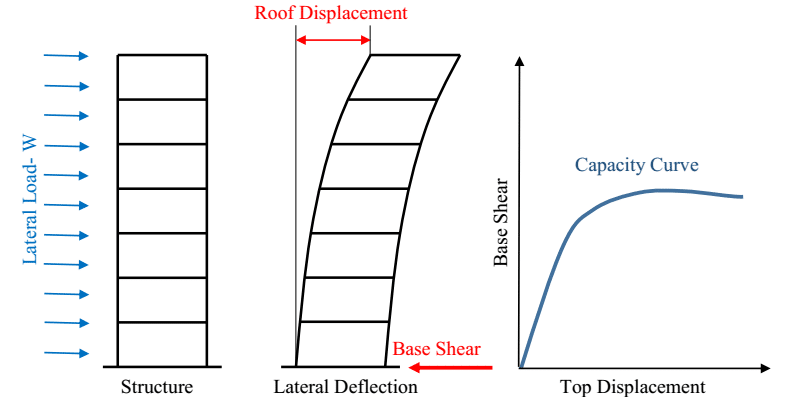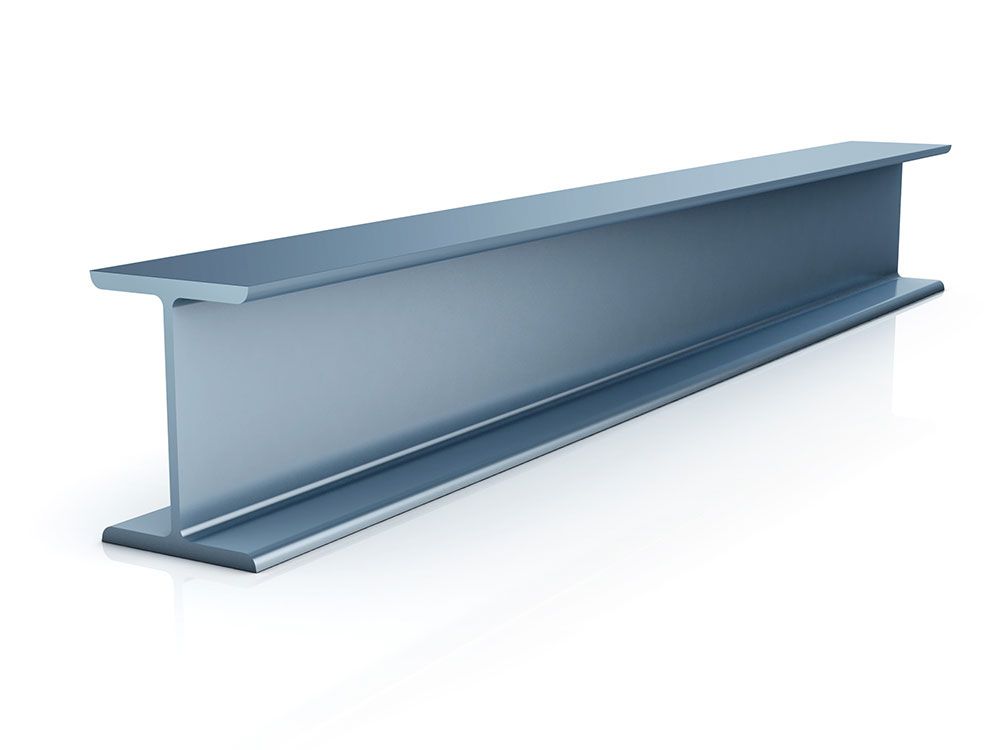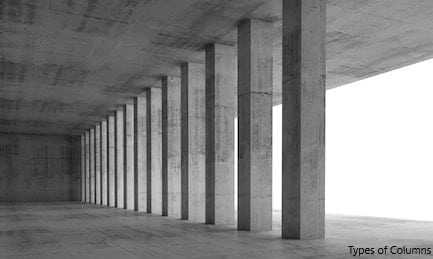Pushover analysis is a powerful technique used in structural engineering to assess the performance of buildings and infrastructure under seismic loads. This method offers valuable insights into the behavior of structures beyond the elastic limit, providing engineers with a comprehensive understanding of their response to extreme events. In this article, we will delve into the intricacies of pushover analysis, explore its applications, and discuss the steps involved in conducting this analysis.
In the field of structural engineering, analyzing the behavior of buildings and infrastructure under seismic forces is of utmost importance. Traditional analysis methods often assume linear behavior and fail to capture the complex interactions that occur when a structure exceeds its elastic range. Pushover analysis, also known as nonlinear static analysis, offers a solution by simulating the inelastic behavior of structures.
Understanding Structural Behavior
Structural behavior can be broadly categorized into two main types: elastic and inelastic behavior.
- Elastic Behavior
When a structure is subjected to small loads, it responds in a linear and elastic manner. This means that the deformations are directly proportional to the applied forces, and upon unloading, the structure returns to its original shape.
- Inelastic Behavior
As the applied loads increase, the structure begins to exhibit inelastic behavior. In this range, deformations are no longer proportional to the forces, and the structure undergoes permanent deformations. Pushover analysis focuses on capturing this inelastic behavior and evaluating the performance of the structure under extreme loading conditions.

Purpose and Benefits of Pushover Analysis
It serves several purposes in structural engineering, offering numerous benefits in the design and evaluation of structures.
Structural Performance Evaluation
One of the primary objectives of pushover analysis is to evaluate the overall performance of a structure. By subjecting the structure to increasing loads, engineers can identify the weak points and potential failure mechanisms. This information helps in optimizing the design and enhancing the structural robustness.
Seismic Performance Assessment
Seismic events pose significant risk to structures, and it is crucial to assess their performance under seismic loads. Pushover analysis allows engineers to determine the structural response during earthquakes and evaluate the adequacy of design measures. By considering the nonlinear behavior and capacity of the structure, it becomes possible to estimate the potential damage and make informed decisions regarding retrofitting or strengthening measures.
Steps to be followed in Pushover Analysis
To conduct a analysis, several steps need to be followed to ensure accurate results and meaningful interpretations.
- Modeling the Structure
The first step is to create a detailed model of the structure using structural analysis software. This involves representing the geometry, material properties, and boundary conditions of the building or infrastructure accurately. The model should capture the essential elements and their interactions to provide a realistic representation of the structure’s behavior.
- Applying Load Patterns
In pushover analysis, a series of load patterns are applied incrementally to the structure. These load patterns simulate the distribution of forces that a structure may experience during an earthquake. The magnitude and direction of the loads are gradually increased until the structure reaches its capacity or a predefined limit state.
- Nonlinear Analysis
The heart of pushover analysis lies in performing nonlinear analyses. This involves considering the nonlinear behavior of materials, such as concrete and steel, under increasing loads. Nonlinear analysis methods, such as the fiber-based approach or the plastic hinge model, are employed to accurately capture the inelastic response of the structure.
- Performance Assessment
During the analysis, various performance parameters are monitored to assess the behavior of the structure. These parameters include inter-story drifts, base shear forces, and plastic hinge rotations. By analyzing these outputs, engineers can evaluate the structural integrity, identify potential failure modes, and quantify the safety margins.

Pushover Analysis Techniques
Several analysis techniques are commonly used in practice, each with its own advantages and limitations.
- Force-Based Pushover Analysis
In force-based analysis, the applied loads are increased incrementally until a predefined displacement or force capacity is reached. This technique focuses on the distribution of forces within the structure and provides insights into the force demands on individual components or elements.
- Displacement-Based Pushover Analysis
Displacement-based analysis, on the other hand, applies incremental displacements to the structure. The loads are adjusted to maintain the target displacements, allowing for a more direct assessment of the structure’s deformation capacity and performance at different levels of displacement.
- Capacity Spectrum Method
The capacity spectrum method combines aspects of both force-based and displacement-based pushover analyses. It uses a predefined capacity spectrum, which represents the demand and capacity relationship of the structure. By comparing the demand spectrum obtained from ground motion analysis to the capacity spectrum, engineers can evaluate the adequacy of the structure’s design and identify potential deficiencies.
Limitations and Challenges of Pushover Analysis
While analysis offers valuable insights, it is essential to be aware of its limitations and challenges.
Assumptions and Simplifications
Pushover analysis relies on several simplifying assumptions to streamline the calculations and make the analysis computationally feasible. However, these simplifications may not accurately represent the actual behavior of the structure, leading to potential discrepancies between the analysis results and real-world performance.
Nonlinearity Modeling
Accurate modeling of nonlinear behavior is crucial for obtaining reliable results in analysis. However, it can be challenging to accurately capture the complex nonlinearities present in structural elements. The selection of appropriate material models and the calibration of their parameters require expertise and careful consideration.
Accurate Ground Motion Selection
The accuracy of pushover analysis heavily depends on the selection of ground motion records. The chosen records should be representative of the seismic hazard at the site and adequately capture the frequency content and intensity of potential earthquakes. Careful consideration must be given to ensure realistic and appropriate ground motion input for accurate analysis results.
Case Studies and Applications
Analysis has been extensively applied in various real-world scenarios to assess the seismic performance of different types of structures.
- High-Rise Buildings
High-rise buildings are subjected to significant lateral loads during earthquakes. Pushover analysis helps engineers evaluate the response of these structures, identify potential weak points, and optimize the design to ensure the safety of occupants. It aids in determining the need for additional lateral bracing, damping devices, or structural upgrades to improve the seismic performance.
- Bridges and Infrastructure
Bridges and other critical infrastructure are vulnerable to seismic forces. Pushover analysis enables engineers to evaluate the vulnerability of these structures and assess their capacity to withstand earthquakes. By considering the nonlinear behavior of bridge components, such as piers and abutments, engineers can identify potential failure mechanisms and implement appropriate retrofitting measures.
- Historical Structures
Historical structures often lack detailed design information and may not meet current seismic design codes. Pushover analysis offers a valuable tool for assessing the seismic vulnerability of these structures and guiding preservation and retrofitting efforts. By understanding their inelastic behavior, engineers can develop strategies to protect these cultural heritage sites from seismic hazards while preserving their architectural integrity.
Pushover Analysis Software Tools
To facilitate the implementation of pushover analysis, several software tools are available in the market, offering advanced modeling and analysis capabilities.
ETABS
ETABS (Extended Three-Dimensional Analysis of Building Systems) is a popular software widely used for this . It provides a user-friendly interface for modeling complex structures, applying loads, and performing nonlinear static analyses. ETABS offers various options for pushover analysis, including force-based and displacement-based methods, making it a versatile tool for engineers.
SAP2000
SAP2000 is another widely used software package. It offers a comprehensive suite of tools for structural analysis and design. SAP2000 provides advanced nonlinear analysis capabilities, including pushover analysis, allowing engineers to evaluate the performance of structures under seismic loads efficiently.
Perform-3D
Perform-3D is a specialized software tool specifically developed for nonlinear analysis, including pushover analysis. It offers a range of advanced modeling options, material models, and analysis algorithms to accurately simulate the behavior of structures under extreme loading conditions. Perform-3D is known for its robust analysis capabilities and its ability to handle complex nonlinearities.
Pushover analysis is a powerful technique that enables engineers to evaluate the behavior and performance of structures beyond the elastic limit. By considering the inelastic response of buildings and infrastructure under seismic loads, this type of analysis provides valuable insights for design optimization, retrofitting strategies, and seismic performance assessment. Despite its limitations, pushover analysis, when conducted with careful consideration and accurate modeling, contributes significantly to the advancement of structural engineering practices.
FAQs
What is the main purpose of pushover analysis?
The main purpose of this type of analysis is to assess the inelastic behavior and seismic performance of structures. It helps engineers understand how a structure responds to increasing loads and identify potential failure mechanisms and weak points.
How is it different from traditional analysis methods?
Traditional analysis methods typically assume linear behavior and do not capture the inelastic response of structures. Pushover analysis, on the other hand, considers the nonlinear behavior and deformation capacity of the structure, providing a more realistic evaluation of its seismic performance.
Is pushover modeling applicable to all types of structures?
It can be applied to various types of structures, including buildings, bridges, and infrastructure. However, its applicability may depend on the complexity and behavior of the structure. Careful consideration must be given to modeling assumptions and the selection of appropriate analysis techniques.
Can pushover analysis be used for retrofitting existing structures?
Yes, it is commonly used for the retrofitting of existing structures. By performing a pushover analysis on an existing building, engineers can assess its capacity to withstand seismic loads and identify potential deficiencies. This information helps in designing retrofit measures to enhance the structural performance and ensure the safety of occupants.
What are the key considerations when selecting a analysis software?
When selecting a pushover analysis software, several key considerations should be taken into account. These include the software’s capabilities for nonlinear analysis, its user-friendliness and interface, the availability of advanced modeling options, and the compatibility with other analysis and design tools. Additionally, the support and resources provided by the software vendor should be considered to ensure efficient implementation and troubleshooting.


